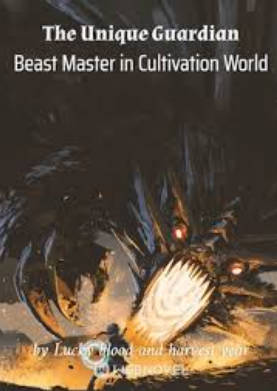v3 Chapter 300: Buying Phu Quoc and Kamchatka?
On May 10, 1867, the French Empire launched an attack on the city of Kampong Cham in the north of Phnom Penh in the Cambodian area of the Kingdom of Siam. The Crown Prince of Siam, Chulalongkorn, led the Siamese soldiers to fight with all their strength. Although the French Empire finally won the victory and occupied the city. The city, but because the Siamese side was familiar with the terrain, the French Empire suffered heavy losses.
The French Empire had 20,000 French troops and 10,000 South Vietnamese servants, and the Kingdom of Siam had 40,000 troops.
The French army suffered more than 5,000 casualties and more than 4,000 servants.
The Siam Kingdom lost only 12,000 casualties. Although it seems that the French army lost less than the Siam Kingdom, it must be known that this is the Far East. The French army lost this time, but the number of garrisons that hurt the French army decreased sharply, so if In the case of increasing the army, it will have a huge impact on the situation of the French army in the Far East, and the French may even change from offensive to defensive.
If the Kingdom of Siam had organized a sufficient number of troops, it might have launched a counter-offensive against the French Far East Army.
When the tragic victory in the Far East came, Napoleon III was first happy and then worried.
As a last resort, he once again sent 20,000 people from the French local army to support the mobilization move. Although many people in the country began to oppose his Far East policy, due to the victory, he is still in a relatively quiet stage, which can be suppressed. , but Napoleon III could not help but worry that the progress of the Far East is slow, and sanctions from Europe and the United States are coming. More countries may join this ranks, which will cause the French Empire to gradually lose its international prestige. At the same time, its own strength is also lost. .
"The Far East campaign must be resolved quickly, otherwise it will have an impact on other strategies of the French Empire"
Napoleon III secretly decided.
In fact, Napoleon III was right, because just when he was worried about the situation of the French Empire over the war with Siam in the Far East, William IV launched a new provocation, yes, provocation .
On May 12, 1867, the Netherlands sent Foreign Minister Haysbert von to visit Bangkok, the former Kingdom of Siam. During the visit, Haysbert von kept stressing the interests of the Netherlands in the Kingdom of Siam and asked the French Empire not to harm the interests of the Netherlands. Among them, it is also listed that the Netherlands will invest more than 1 million pounds in the industrial aid plan in the Kingdom of Siam in the next 5 years. Among them, the coastal cities of Sihanoukville and Kampot in the Cambodian region of the Kingdom of Siam will invest more than 200,000 pounds. GBP.
Haysbet Fung purchased Phu Quoc Island in the southern region of Cambodia from the Kingdom of Siam for £200,000, effective from May 20.
Phu Quoc Island is located between South Vietnam and the Cambodian area of the Kingdom of Siam. This island is of average soil quality and was of little value in the era of farming civilization. Therefore, the Kingdom of Siam did not have strong control over this island. The French Empire originally planned to occupy it last time, but Naval exercises, such as the Netherlands and the United Kingdom, eventually abandoned the idea.
Phu Quoc Island is roughly in the shape of a triangle, about 50 kilometers long from north to south, 25 kilometers from east to west, and 590 square kilometers in area. He cited Cambodia’s coastline as only 12 kilometers. Phnom Penh, the largest city in Cambodia, is 150 kilometers away from Ho Chi in South Vietnam. Ming City is 280 km away, while Bangkok, the capital of the Kingdom of Siam, is 500 km away.
Therefore, if it is not proposed by the Netherlands, I believe that many people in the Kingdom of Siam do not know the existence of this island.
£200,000? Not a lot.
It is only 30 kilometers away from the coast of South Vietnam in the French Empire. It is too dangerous. If you don’t sell it, maybe France will occupy it soon. Then the Kingdom of Siam really has nothing, and if you sell it, you can make more Holland there. The stronghold has even become a military base of the Netherlands at sea to prevent the French Empire in the east from advancing westward from the sea. Rama IV felt that he could kill two birds with one stone.
So with Anna's deliberate approval. Although Chulalongkorn objected in his heart, but the situation forced him to agree to this territorial transaction?
As a result, this transaction was passed quickly, and the Netherlands therefore added a stronghold here. From Jakarta in East India, it only took a few days to complete the handover, and all this was occupied by the French Empire. under the noses of South Vietnam and eastern Cambodia.
Gu Zhi
Invisibly, the Netherlands only spent 200,000 pounds to get such a large piece of land, which made the French Empire very angry.
However, when I saw that the Dutch battleships were cruising around the surrounding islands, and the Netherlands sent an army of more than 5,000 troops to the island, although more than 3,000 of them were the East Indian indigenous army, only 2,000 Dutch troops were formed, but in the face of Siamese The Luo Kingdom had already struggled to expedite the French expedition, and all of a sudden, they could only look at the sea and sigh.
Sigh the Netherlands will really make cheap!
But are the Dutch really the only ones?
That's not right.
On May 16, 1867, the Secretary of State of the United States of America, Seward, visited St. Petersburg, the Russian Empire. During his visit, he negotiated with the Russian Prime Minister Gorchakov. In the end, the Russian Empire and the United States of America reached a territory. transaction agreement.
The Commonwealth of America and the Russian Empire agreed to sell for $10 million (£2 million, including $200,000 in handling fees), and the land contract came into effect on October 18, 1867, and the 370,000-square-kilometer Kamchatka Peninsula was about to be into the hands of the United States of America.
When the news came out, Europe suddenly looked a little complicated in the direction of the Russian Empire.
The Kamchatka Peninsula, just like the Phu Quoc Island of the Kingdom of Siam that the Netherlands just purchased, is an extremely unfamiliar place in Europe, if it were not for the Far East where Napoleon III launched the war, they would have never heard of it.
However, ordinary people soon forget it, but European and American executives are staring at the map in a daze.
So did William IV and his Privy Council members, of course.
"The Netherlands has written about Phu Quoc Island, that's fair enough After all, it is relatively close to the Kingdom of Siam, one of the Dutch Far East markets. If Phu Quoc Island develops, it will be enough for the Netherlands to have a trade transfer station there."
William IV remembered the role of the southern administrative districts of his mother country in his previous life, so this deal was on his whim, so he stuffed it into the Far East visit itinerary of Policy Haysbert Feng. He didn't expect everything to go so smoothly, but beyond his expectations.
Phu Quoc Island can further consolidate the position of the Netherlands in Southeast Asia. Regardless of whether the organization is established in the future, the influence of the Netherlands is enough to run through the entire modern history of Southeast Asia.
The Netherlands can follow the example of the United Kingdom and make Phu Quoc Island prosperous, attracting the Siamese Kingdom and the South Vietnamese, Malays, Filipinos and even the French and British there, and become a pearl of great influence in the Netherlands.
Infiltrating the countries there, even William IV thought, if the future Cambodia was peacefully established by the Netherlands from the Kingdom of Siam, wouldn't it be more wonderful to become a country similar to the vassal state of the Netherlands?
Thinking about it, William IV couldn't help but be moved.
However, when I saw that the United States of America actually reached a territorial deal with the Tsarist Russia Empire, my heart was shocked.
The French Empire had 20,000 French troops and 10,000 South Vietnamese servants, and the Kingdom of Siam had 40,000 troops.
The French army suffered more than 5,000 casualties and more than 4,000 servants.
The Siam Kingdom lost only 12,000 casualties. Although it seems that the French army lost less than the Siam Kingdom, it must be known that this is the Far East. The French army lost this time, but the number of garrisons that hurt the French army decreased sharply, so if In the case of increasing the army, it will have a huge impact on the situation of the French army in the Far East, and the French may even change from offensive to defensive.
If the Kingdom of Siam had organized a sufficient number of troops, it might have launched a counter-offensive against the French Far East Army.
When the tragic victory in the Far East came, Napoleon III was first happy and then worried.
As a last resort, he once again sent 20,000 people from the French local army to support the mobilization move. Although many people in the country began to oppose his Far East policy, due to the victory, he is still in a relatively quiet stage, which can be suppressed. , but Napoleon III could not help but worry that the progress of the Far East is slow, and sanctions from Europe and the United States are coming. More countries may join this ranks, which will cause the French Empire to gradually lose its international prestige. At the same time, its own strength is also lost. .
"The Far East campaign must be resolved quickly, otherwise it will have an impact on other strategies of the French Empire"
Napoleon III secretly decided.
In fact, Napoleon III was right, because just when he was worried about the situation of the French Empire over the war with Siam in the Far East, William IV launched a new provocation, yes, provocation .
On May 12, 1867, the Netherlands sent Foreign Minister Haysbert von to visit Bangkok, the former Kingdom of Siam. During the visit, Haysbert von kept stressing the interests of the Netherlands in the Kingdom of Siam and asked the French Empire not to harm the interests of the Netherlands. Among them, it is also listed that the Netherlands will invest more than 1 million pounds in the industrial aid plan in the Kingdom of Siam in the next 5 years. Among them, the coastal cities of Sihanoukville and Kampot in the Cambodian region of the Kingdom of Siam will invest more than 200,000 pounds. GBP.
Haysbet Fung purchased Phu Quoc Island in the southern region of Cambodia from the Kingdom of Siam for £200,000, effective from May 20.
Phu Quoc Island is located between South Vietnam and the Cambodian area of the Kingdom of Siam. This island is of average soil quality and was of little value in the era of farming civilization. Therefore, the Kingdom of Siam did not have strong control over this island. The French Empire originally planned to occupy it last time, but Naval exercises, such as the Netherlands and the United Kingdom, eventually abandoned the idea.
Phu Quoc Island is roughly in the shape of a triangle, about 50 kilometers long from north to south, 25 kilometers from east to west, and 590 square kilometers in area. He cited Cambodia’s coastline as only 12 kilometers. Phnom Penh, the largest city in Cambodia, is 150 kilometers away from Ho Chi in South Vietnam. Ming City is 280 km away, while Bangkok, the capital of the Kingdom of Siam, is 500 km away.
Therefore, if it is not proposed by the Netherlands, I believe that many people in the Kingdom of Siam do not know the existence of this island.
£200,000? Not a lot.
It is only 30 kilometers away from the coast of South Vietnam in the French Empire. It is too dangerous. If you don’t sell it, maybe France will occupy it soon. Then the Kingdom of Siam really has nothing, and if you sell it, you can make more Holland there. The stronghold has even become a military base of the Netherlands at sea to prevent the French Empire in the east from advancing westward from the sea. Rama IV felt that he could kill two birds with one stone.
So with Anna's deliberate approval. Although Chulalongkorn objected in his heart, but the situation forced him to agree to this territorial transaction?
As a result, this transaction was passed quickly, and the Netherlands therefore added a stronghold here. From Jakarta in East India, it only took a few days to complete the handover, and all this was occupied by the French Empire. under the noses of South Vietnam and eastern Cambodia.
Gu Zhi
Invisibly, the Netherlands only spent 200,000 pounds to get such a large piece of land, which made the French Empire very angry.
However, when I saw that the Dutch battleships were cruising around the surrounding islands, and the Netherlands sent an army of more than 5,000 troops to the island, although more than 3,000 of them were the East Indian indigenous army, only 2,000 Dutch troops were formed, but in the face of Siamese The Luo Kingdom had already struggled to expedite the French expedition, and all of a sudden, they could only look at the sea and sigh.
Sigh the Netherlands will really make cheap!
But are the Dutch really the only ones?
That's not right.
On May 16, 1867, the Secretary of State of the United States of America, Seward, visited St. Petersburg, the Russian Empire. During his visit, he negotiated with the Russian Prime Minister Gorchakov. In the end, the Russian Empire and the United States of America reached a territory. transaction agreement.
The Commonwealth of America and the Russian Empire agreed to sell for $10 million (£2 million, including $200,000 in handling fees), and the land contract came into effect on October 18, 1867, and the 370,000-square-kilometer Kamchatka Peninsula was about to be into the hands of the United States of America.
When the news came out, Europe suddenly looked a little complicated in the direction of the Russian Empire.
The Kamchatka Peninsula, just like the Phu Quoc Island of the Kingdom of Siam that the Netherlands just purchased, is an extremely unfamiliar place in Europe, if it were not for the Far East where Napoleon III launched the war, they would have never heard of it.
However, ordinary people soon forget it, but European and American executives are staring at the map in a daze.
So did William IV and his Privy Council members, of course.
"The Netherlands has written about Phu Quoc Island, that's fair enough After all, it is relatively close to the Kingdom of Siam, one of the Dutch Far East markets. If Phu Quoc Island develops, it will be enough for the Netherlands to have a trade transfer station there."
William IV remembered the role of the southern administrative districts of his mother country in his previous life, so this deal was on his whim, so he stuffed it into the Far East visit itinerary of Policy Haysbert Feng. He didn't expect everything to go so smoothly, but beyond his expectations.
Phu Quoc Island can further consolidate the position of the Netherlands in Southeast Asia. Regardless of whether the organization is established in the future, the influence of the Netherlands is enough to run through the entire modern history of Southeast Asia.
The Netherlands can follow the example of the United Kingdom and make Phu Quoc Island prosperous, attracting the Siamese Kingdom and the South Vietnamese, Malays, Filipinos and even the French and British there, and become a pearl of great influence in the Netherlands.
Infiltrating the countries there, even William IV thought, if the future Cambodia was peacefully established by the Netherlands from the Kingdom of Siam, wouldn't it be more wonderful to become a country similar to the vassal state of the Netherlands?
Thinking about it, William IV couldn't help but be moved.
However, when I saw that the United States of America actually reached a territorial deal with the Tsarist Russia Empire, my heart was shocked.







